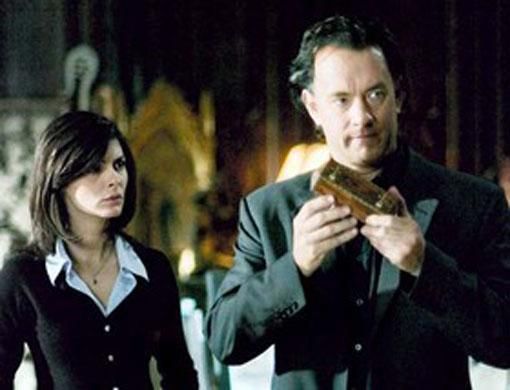Occupied Jerusalem: In a scene worthy of a Dan Brown novel, archaeologists a quarter of a century ago unearthed a burial chamber near Occupied Jerusalem. Inside they found ossuaries, or boxes of bones, marked with the names of Jesus, Joseph and Mary.
Then one of the ossuaries went missing. The human remains inside were destroyed before any DNA testing could be carried out.
While Middle East academics doubt that the relics belong to the Holy Family, the issue is about to be exposed to a blaze of publicity with the publication this week of a book.
Entitled The Jesus Tomb and co-written by Simcha Jacobovici and Charles Pellegrino, the book promises the inside story of "what may very well be the greatest archaeological find of all time".
Some of the ossuaries will be at the book launch in New York, released by the Israel Antiquities Authority.
The publicity will coincide with a new documentary, to be aired for the first time at a news conference in New York tomorrow, on the tomb.
The claim presented in the documentary is based on years of research by archaeologists, statisticians, experts in ancient scripts and in DNA, a media report quoted the Israeli Yediot Ahronot daily as reporting yesterday.
Hidden necropolis
The documentary, titled The Burial Cave of Jesus, is a joint production by Israeli-born documentary maker Simcha Jacobovici and Oscar-winning film director James Cameron.
The story for both the book and the documentary began in March 1980 when Yosef Gat, an archaeologist employed by the IAA, surveyed a burial chamber on the south-eastern approaches to Occupied Jerusalem.
The area was being developed into the latest suburb of the city, East Talpiot, and bulldozers had uncovered an archaeological site.
DNA tests
Gat found a standard-looking tomb dating from the era of King Herod, the Jewish king known for his murder of infants at the time of the birth of Jesus.
After crawling into the necropolis, Gat found the main chamber had been silted up with soil and debris, with six "kokhim," coffin shaped spaces leading off the main chamber where human remains were housed.
Gat found 10 ossuaries bearing inscriptions, some in ancient Greek and some in Hebrew. One inscription said "Jesus, son of Joseph," another said "Mara", a common form of Maria or Mary, and another said "Yose", a common form of Joseph.
Gat died several years ago. The book's authors base their claim on their own study carried out inside the structure.
The chamber has been closed for years because a modern building was constructed on top of it but the authors got permission to break through the floor of the apartment block and enter the necropolis.
They claim to have found human material on which they performed DNA testing in a New York laboratory. "Tests prove the names are genetically of the same family and statistically, there is a one in 10 million chance this is a family other than the Holy Family," the pre-publication publicity for the book said.
Bone box goes missing
Gat's boss, Professor Amos Kloner, said that while the names together had "a certain power" they are standard for that period. "At least three other ossuaries have been found inscribed with the name Jesus and countless others with Joseph and Mary. It's a beautiful story but without any proof whatsoever," he said.
The 10 ossuaries were taken initially to the Rockefeller Archaeological Museum outside the Old City of Jerusalem. Nine were catalogued and stored but the tenth was left outside in a courtyard along with numerous other relics regarded as having no value. That ossuary has subsequently gone missing.
Prof Kloner said there was no way the tomb housed the family of Jesus. "It is just not possible that a family who came from Galilee, as the New Testament tells us of Joseph and Mary, would be buried over several generations in [Occupied] Jerusalem." However, in this Dan Brown era, we can't help wondering.












